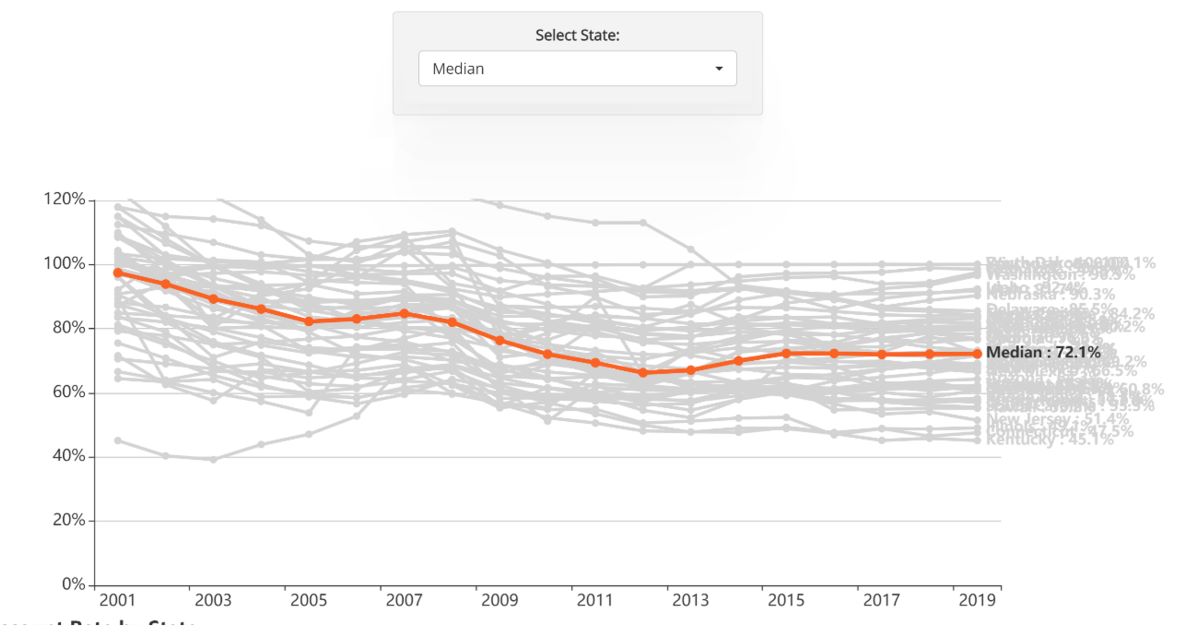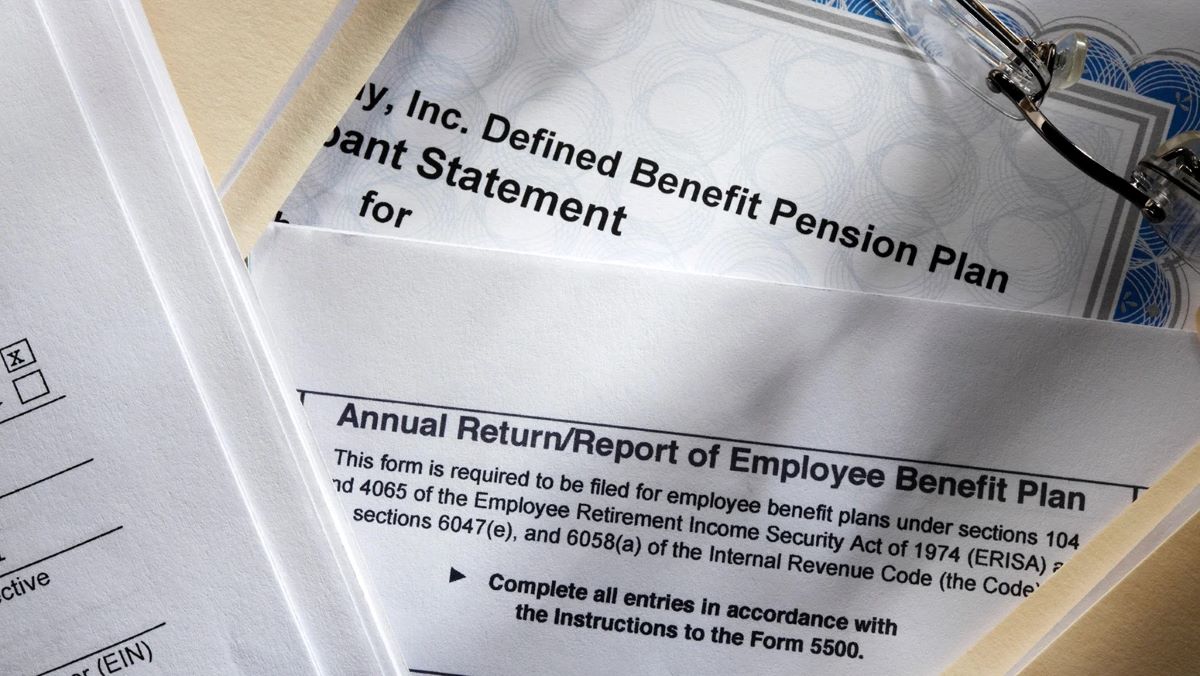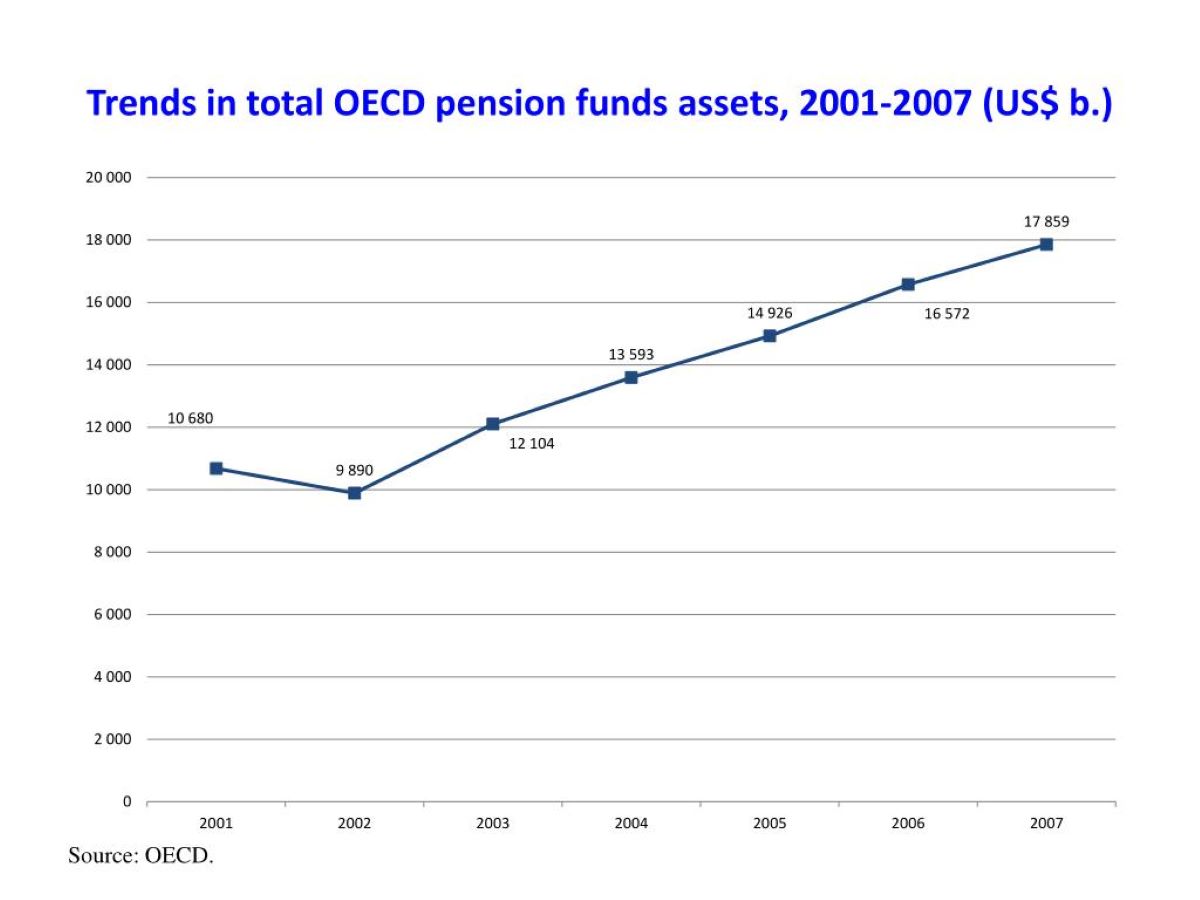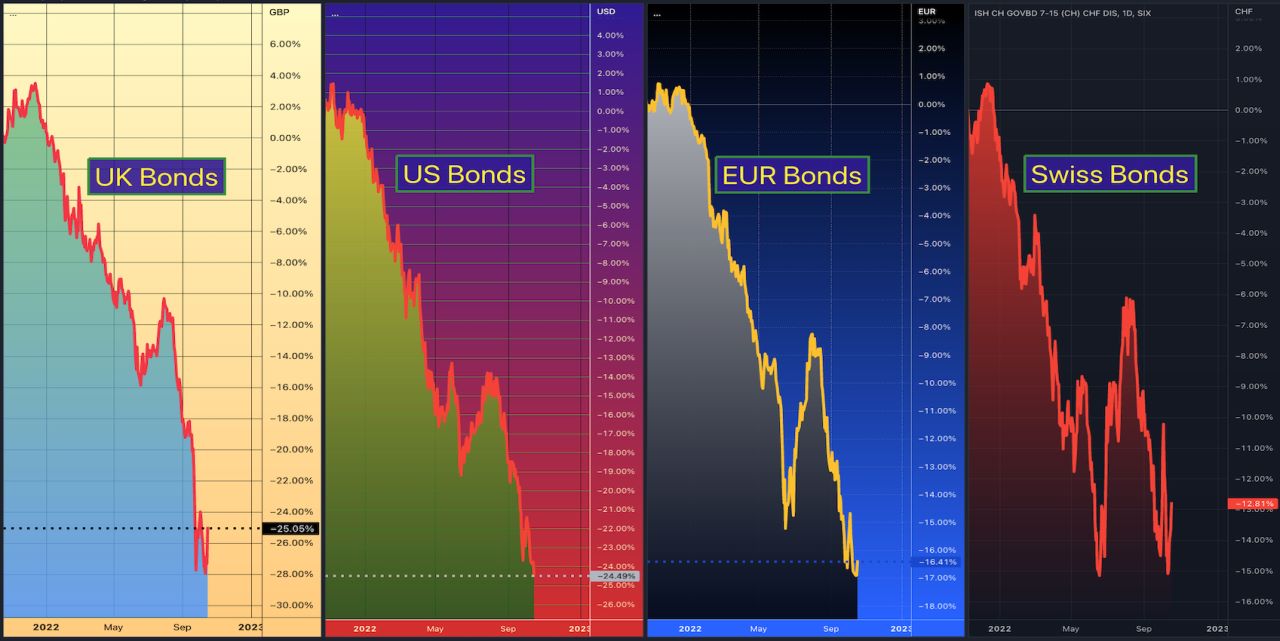

Finance
What Does Funded Ratio Mean For Pension Funds?
Published: January 23, 2024
Learn how the funded ratio impacts pension funds and their financial stability. Discover the significance of funded ratio in finance management.
(Many of the links in this article redirect to a specific reviewed product. Your purchase of these products through affiliate links helps to generate commission for LiveWell, at no extra cost. Learn more)
Table of Contents
Introduction
Understanding Funded Ratio
The funded ratio is a critical metric for assessing the financial health and stability of pension funds. It represents the ratio of the assets held by a pension fund to the present value of its future liabilities. In essence, it measures the extent to which a pension fund has sufficient assets to cover its obligations to current and future retirees. A funded ratio of 100% or higher indicates that the pension fund has adequate assets to meet all its current and future liabilities, while a ratio below 100% signifies a shortfall in assets relative to liabilities.
The funded ratio is a fundamental indicator for evaluating the long-term sustainability of a pension fund. It provides valuable insights into the fund's ability to fulfill its pension payment obligations and maintain financial solvency over time. As such, stakeholders, including pension fund managers, plan sponsors, and beneficiaries, closely monitor the funded ratio to gauge the fund's financial robustness and make informed decisions regarding contributions, investments, and benefit payouts.
A thorough comprehension of the funded ratio is essential for comprehending the financial dynamics of pension funds and the implications of funding levels on the fund's overall performance and risk management. In the subsequent sections, we will delve into the significance of the funded ratio for pension funds, its impact on fund management, as well as the associated challenges and considerations in maintaining an optimal funded ratio.
This article aims to elucidate the multifaceted aspects of the funded ratio, providing a comprehensive understanding of its implications for pension funds and the strategies employed to uphold its stability and sustainability. Let's embark on this enlightening journey to unravel the intricacies of the funded ratio and its pivotal role in the realm of pension fund management.
Understanding Funded Ratio
The funded ratio is a pivotal metric that evaluates the financial health and sustainability of pension funds. It is calculated by dividing the current value of a pension fund's assets by the present value of its future pension liabilities. This ratio serves as a barometer for assessing the fund's capacity to meet its pension payment obligations and maintain solvency over the long term.
A funded ratio of 100% or higher signifies that the pension fund holds adequate assets to cover all its current and future pension liabilities. Conversely, a funded ratio below 100% indicates a shortfall in assets relative to the fund's pension obligations. In such instances, the pension fund may encounter challenges in meeting its payment obligations, potentially leading to funding gaps and financial instability.
Understanding the funded ratio is crucial for stakeholders, including pension fund managers, plan sponsors, and beneficiaries, as it offers valuable insights into the fund's financial standing and risk exposure. A high funded ratio indicates a robust financial position, instilling confidence in the fund's ability to fulfill its pension commitments. Conversely, a low funded ratio raises concerns about the fund's long-term sustainability and may necessitate strategic interventions to bolster its financial resources.
Furthermore, the funded ratio serves as a yardstick for evaluating the effectiveness of the pension fund's investment and funding strategies. By monitoring the funded ratio, fund managers can assess the impact of investment performance, contribution levels, and actuarial assumptions on the fund's overall financial position. This, in turn, facilitates informed decision-making to optimize the fund's funded status and mitigate potential funding shortfalls.
In essence, a comprehensive understanding of the funded ratio is imperative for navigating the complexities of pension fund management and ensuring the fund's ability to meet its pension obligations. It provides a clear assessment of the fund's financial resilience and serves as a catalyst for implementing prudent strategies to uphold its long-term sustainability. The subsequent sections will delve deeper into the significance of the funded ratio for pension funds and its profound implications for fund management and risk mitigation.
Importance of Funded Ratio for Pension Funds
The funded ratio holds immense significance for pension funds, serving as a pivotal gauge of their financial stability and ability to meet pension obligations. Understanding the importance of the funded ratio is paramount for all stakeholders involved in pension fund management, including fund managers, plan sponsors, and beneficiaries.
-
Financial Health Assessment: The funded ratio provides a comprehensive assessment of a pension fund's financial health. A high funded ratio indicates a strong financial position, instilling confidence in the fund's ability to honor its pension commitments. Conversely, a low funded ratio raises concerns about the fund's long-term sustainability and may necessitate strategic interventions to bolster its financial resources.
-
Risk Management: Maintaining an optimal funded ratio is essential for effective risk management within pension funds. A well-funded pension fund is better equipped to withstand market volatility, interest rate fluctuations, and unexpected economic downturns. By ensuring a healthy funded ratio, pension funds can mitigate the risk of funding shortfalls and uphold their long-term solvency.
-
Beneficiary Security: A high funded ratio signifies greater security for pension fund beneficiaries. It assures retirees and future beneficiaries that the fund possesses the necessary assets to fulfill their pension obligations, providing peace of mind and financial stability during retirement.
-
Investment and Funding Strategies: The funded ratio influences the formulation of investment and funding strategies within pension funds. A thorough understanding of the funded ratio enables fund managers to make informed decisions regarding asset allocation, contribution levels, and actuarial assumptions, thereby optimizing the fund's financial position and funding adequacy.
-
Regulatory Compliance: Many regulatory bodies and accounting standards mandate specific funded ratio thresholds for pension funds. Adhering to these requirements is crucial for ensuring compliance and demonstrating the fund's ability to fulfill its pension obligations in accordance with regulatory guidelines.
-
Stakeholder Confidence: A robust funded ratio fosters confidence among stakeholders, including plan sponsors, employees, and regulatory authorities. It reflects the fund's commitment to financial prudence and effective pension management, enhancing its reputation and credibility within the industry.
In essence, the funded ratio plays a pivotal role in shaping the financial landscape of pension funds, guiding strategic decision-making, and safeguarding the interests of pension beneficiaries. Its significance extends beyond mere financial metrics, encompassing the broader realm of risk management, regulatory adherence, and stakeholder confidence. The subsequent section will delve into the impact of the funded ratio on pension fund management, elucidating the strategies employed to maintain an optimal funded ratio and ensure the fund's long-term sustainability.
Impact of Funded Ratio on Pension Fund Management
The funded ratio exerts a profound impact on the strategic management of pension funds, influencing investment decisions, funding strategies, and risk mitigation measures. Understanding the implications of the funded ratio is instrumental in steering the financial trajectory of pension funds and ensuring their long-term viability.
Asset Allocation and Investment Strategies: The funded ratio significantly influences the asset allocation and investment strategies employed by pension funds. A well-funded pension fund may have the flexibility to pursue a more aggressive investment approach, aiming for higher returns to further bolster its funded status. Conversely, a fund with a lower funded ratio may opt for more conservative investment strategies to mitigate risk and safeguard its existing assets.
Contribution Planning and Funding Adequacy: Maintaining an optimal funded ratio is pivotal for assessing the adequacy of contributions and formulating effective funding plans. A high funded ratio may indicate surplus assets, enabling the fund to adjust contribution levels or allocate excess funds towards strategic investments. In contrast, a low funded ratio necessitates diligent contribution planning to bridge funding gaps and enhance the fund’s financial resilience.
Actuarial Assumptions and Risk Management: The funded ratio serves as a key parameter for evaluating and adjusting actuarial assumptions within pension funds. It informs risk management strategies, guiding the assessment of longevity risk, market volatility, and interest rate fluctuations. By aligning actuarial assumptions with the fund’s funded status, pension managers can prudently manage risks and optimize the fund’s long-term sustainability.
Benefit Payouts and Liabilities Management: The funded ratio directly impacts the management of pension benefit payouts and liabilities. A well-funded pension fund may have greater flexibility in managing benefit obligations, potentially considering adjustments to benefit payouts based on the fund’s financial position. In contrast, a fund with a lower funded ratio may need to adopt stringent liability management measures to ensure the continued fulfillment of pension obligations.
Regulatory Compliance and Reporting: Pension funds are subject to regulatory requirements concerning funded ratio thresholds and reporting standards. Adhering to these regulations is imperative for demonstrating compliance and transparency in pension fund management. The funded ratio serves as a critical benchmark for regulatory assessments, guiding the fund’s adherence to prescribed funding levels and reporting obligations.
Strategic Decision-Making and Long-Term Sustainability: Ultimately, the funded ratio influences strategic decision-making processes aimed at ensuring the long-term sustainability of pension funds. It guides the formulation of prudent financial strategies, risk mitigation measures, and funding plans, all of which are instrumental in upholding the fund’s financial resilience and safeguarding the interests of pension beneficiaries.
The impact of the funded ratio permeates every facet of pension fund management, shaping investment decisions, funding strategies, and risk management practices. Its influence extends beyond financial metrics, encompassing regulatory compliance, stakeholder confidence, and the overarching goal of securing the financial well-being of pension funds. The subsequent section will address the challenges and considerations associated with maintaining an optimal funded ratio, shedding light on the complexities inherent in pension fund management.
Challenges and Considerations
Navigating the landscape of the funded ratio presents pension funds with a myriad of challenges and considerations, necessitating astute management and strategic foresight to uphold financial sustainability and meet pension obligations.
Market Volatility and Economic Uncertainty: Pension funds are susceptible to market fluctuations and economic uncertainties, which can significantly impact their funded ratio. Sudden market downturns or prolonged periods of low interest rates can diminish the value of fund assets, leading to a decrease in the funded ratio and posing challenges in meeting pension obligations.
Longevity Risk and Demographic Shifts: The prevalence of longevity risk, coupled with demographic shifts such as an aging population, poses considerable challenges for pension funds. A prolonged increase in life expectancy may elevate pension liabilities, exerting pressure on the funded ratio and necessitating proactive measures to manage the impact of demographic changes on the fund’s financial position.
Regulatory Compliance and Funding Requirements: Adhering to regulatory standards and funding requirements presents a notable consideration for pension funds. Meeting prescribed funded ratio thresholds and fulfilling reporting obligations demands meticulous monitoring and strategic planning to ensure compliance while maintaining the fund’s long-term financial sustainability.
Investment Performance and Asset-Liability Management: The performance of pension fund investments plays a pivotal role in determining the fund’s funded ratio. Effective asset-liability management is essential for aligning investment strategies with pension obligations, optimizing the funded ratio, and mitigating the impact of market dynamics on the fund’s financial position.
Contribution Dynamics and Funding Shortfalls: The interplay between contribution dynamics and funding shortfalls presents a complex challenge for pension funds. Balancing contribution levels with funding adequacy is crucial for sustaining a healthy funded ratio and addressing potential shortfalls to ensure the fund’s ability to meet pension obligations.
Stakeholder Communication and Transparency: Maintaining open communication with stakeholders and fostering transparency in reporting the funded ratio is imperative for instilling confidence and trust in pension fund management. Clear and concise communication regarding the fund’s financial position and the factors influencing the funded ratio is essential for building credibility and ensuring stakeholder support.
Dynamic Risk Management and Contingency Planning: Proactive risk management and contingency planning are essential considerations for pension funds. Anticipating and mitigating potential risks that could impact the funded ratio, such as interest rate fluctuations, inflation, or market volatility, is crucial for safeguarding the fund’s long-term sustainability and resilience.
Technological Advancements and Data Analytics: Embracing technological advancements and leveraging data analytics can enhance the management of the funded ratio. Harnessing advanced analytics tools can provide valuable insights into funding trends, investment performance, and actuarial projections, empowering pension funds to make informed decisions and optimize their funded status.
Addressing these challenges and considerations requires a holistic approach to pension fund management, encompassing proactive risk mitigation, strategic planning, and a steadfast commitment to maintaining an optimal funded ratio. By navigating these complexities with diligence and foresight, pension funds can fortify their financial resilience and uphold their commitment to fulfilling pension obligations.
Conclusion
The funded ratio stands as a cornerstone of pension fund management, encapsulating the fund’s financial resilience, risk exposure, and long-term sustainability. Its significance permeates every facet of pension fund operations, guiding investment decisions, funding strategies, and regulatory compliance efforts. As we conclude this exploration of the funded ratio and its pivotal role in pension fund management, it is evident that maintaining an optimal funded ratio is essential for safeguarding the financial well-being of pension funds and ensuring the security of pension beneficiaries.
The funded ratio serves as a barometer of the fund’s financial health, offering valuable insights into its ability to meet pension obligations and navigate economic uncertainties. It influences strategic decision-making processes, asset allocation strategies, and risk management practices, shaping the fund’s trajectory and long-term viability. Moreover, the funded ratio fosters stakeholder confidence, regulatory adherence, and transparent communication, underpinning the fund’s credibility and commitment to prudent financial management.
However, the journey to sustaining an optimal funded ratio is rife with challenges and considerations, from market volatility and regulatory compliance to demographic shifts and investment performance. Pension funds must navigate these complexities with astute management, proactive risk mitigation, and a forward-looking approach to ensure the fund’s resilience in the face of evolving financial landscapes.
As pension funds embrace technological advancements, data analytics, and dynamic risk management practices, they can harness valuable insights to optimize their funded status and proactively address funding shortfalls. By fostering transparent communication with stakeholders and adhering to regulatory standards, pension funds can bolster their credibility and fortify their commitment to fulfilling pension obligations.
In essence, the funded ratio serves as a compass for pension funds, guiding them toward financial prudence, strategic resilience, and the unwavering commitment to securing the financial well-being of retirees and beneficiaries. By navigating the intricacies of the funded ratio with diligence and foresight, pension funds can uphold their pivotal role in providing financial security and stability in the realm of retirement benefits.
As we reflect on the profound implications of the funded ratio, it becomes evident that its significance transcends mere financial metrics, embodying the ethos of responsible stewardship and unwavering dedication to pension fund management. Through a steadfast focus on maintaining an optimal funded ratio, pension funds can navigate the complexities of the financial landscape and uphold their commitment to safeguarding the retirement security of millions across the globe.














